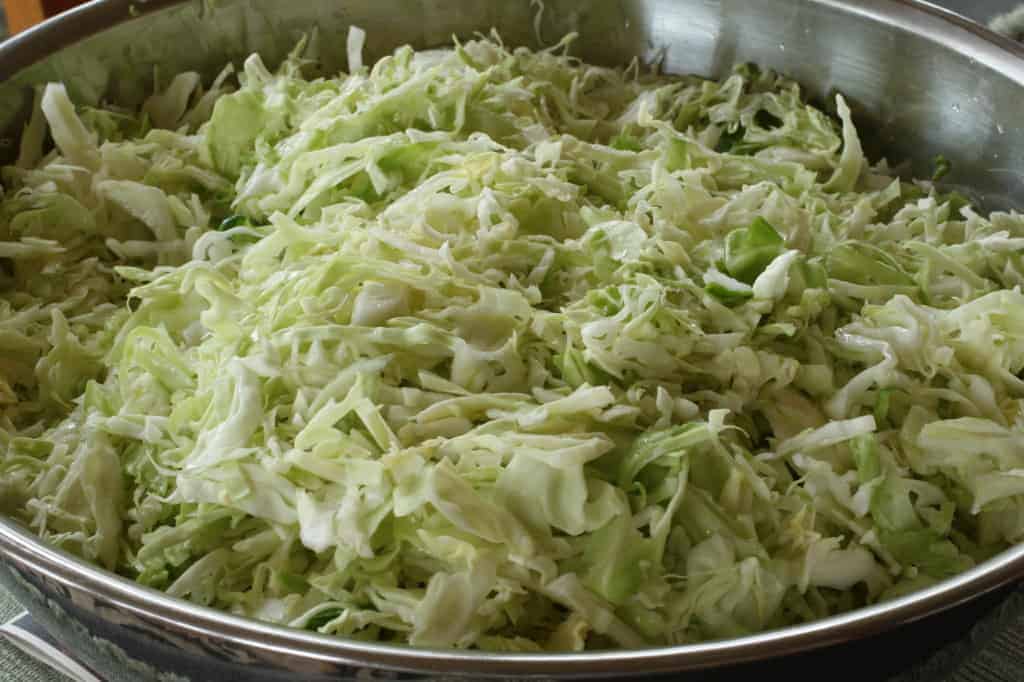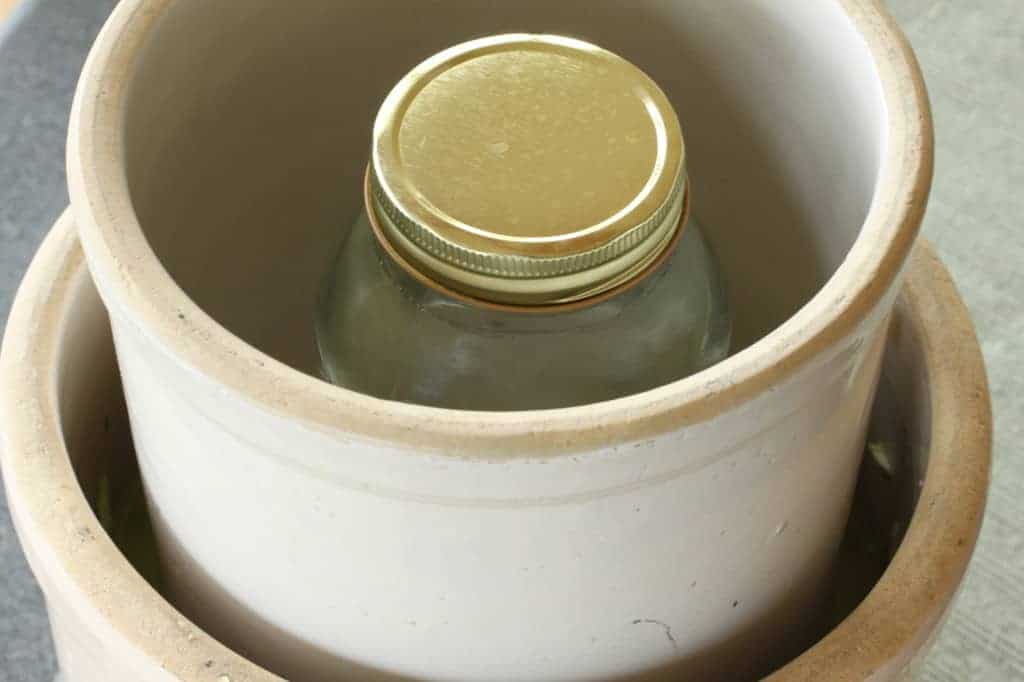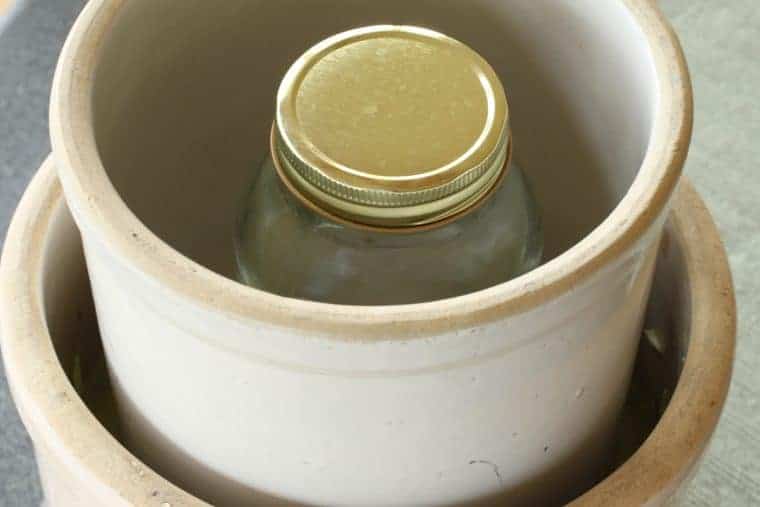Sauerkraut is fermented food and a prebiotic. This old-world food is a hot food trend you can make at home!
DIY food projects are keeping experimental cooks bust. Count me among them. I’ve made sauerkraut and fresh cheese and dehydrated a few things. Simple? Yes. Worth it? Yes, but not sure I’ll repeat some of them!
Old Fashioned Sauerkraut
My dad remembers sneaking down to the cellar to nibble from his mom’s crock of ‘kraut. So that story got me started. Since she’s not able to guide me, I searched for recipes. That Internet search resulted in, oh, about 1,850,000 options.
Sauerkraut is a Fermented Food
Fermented foods and healthy bacteria are hot trends. Fermentation uses bacteria and yeasts to convert sugars and starches into an alcohol or acid which creates foods and flavors. Fermented foods include beer, bourbon, bread, soy sauce, yogurt, coffee, chocolate and sauerkraut.
Shopping tip: When shopping for fermented foods, choose brands that state they contain live organisms. Canned and jarred foods that are heat processed may not be good sources because high heat kills the bacteria. A refrigerated, fresh sauerkraut delivers bacteria that a can of sauerkraut won’t.
Fermentation involves yeasts and molds, so food safety rules reigns supreme. I narrowed the results to research-based recipes. That’s where University Cooperative Extension is my go-to resource. To find the Nutrition and Food Safety free handouts with recipes and instruction online go to www.uwyo.edu then search for Food Preservation or National Center for Food Preservation.
What are Probiotic Foods?
Probiotic foods have “good” bacteria that help keep a healthy balance in your gut. Specifically, foods rich in fiber and plant compounds (the following links take you to more recipes) such as whole grains, fruits, vegetables, nuts, and legumes (split peas, black beans, pinto beans, and lentils) satisfy the gut bacteria. Fermented foods and those with live, active cultures such as yogurt, kefir, miso, kimchi, and unpasteurized sauerkraut and pickles (make your own or find in the refrigerated section at the grocery store) contain beneficial bacteria which helps keep the gut healthy.
P.S. Want more healthy living tips and recipes? Sign up for my newsletter here.
Canning and Food Safety Resources
Food preservation, such as canning and fermentation, has evolved over the years. Updates reflect changes in food varieties, bacteria, and knowledge about canning and fermenting. For example, tomatoes have become less acidic than they were 20 years ago, so it’s best not to rely on your grandma’s recipe. Instead use recipes from the experts who monitor agricultural and environmental changes.
Colorado State University Extension – especially good for high altitude adjustments for time and temperature
National Center for Home for Preservation, University of Georgia
USDA Complete Guide to Home Canning

shredded cabbage
How to make sauerkraut in a small crock
Back to my sauerkraut.
I scrubbed a 2-gallon, 9-inch tall crock to get going. Because one head of cabbage shreds to 8 cups or so, I used my food processor to shred 2 heads of cabbage. You want the cabbage to be thin – about the size of a quarter. Uniform sizes make it easier for the fermentation to happen.
Tools to make sauerkraut

starting sauerkraut
- A 1-gallon container is needed for 5 pounds of fresh cabbage. A 5-gallon stone crock is of ideal size for fermenting about 25 pounds of fresh cabbage. Food grade plastic and glass containers are excellent substitutes for stone crocks. Other 1- to 3-gallon non-food-grade plastic containers may be used if lined inside with a clean food-grade plastic bag – not a trash-can liner.
- A plate that fits into the crock to keep the sauerkraut submerged, 1 to 2 inches below the brine.
- A jar filled with water to keep the plate weighted down, so the sauerkraut stays covered with brine.
- A clean towel to cover the top of the crock to keep out insects and dust.
- Canning or pickling salt.
I loved seeing the science at work. As the fermentation kicked into gear, the funky smells, the bubbly…
For 5 pounds of cabbage, I used 3 tablespoons pickling salt
PrintSauerkraut recipe
- Yield: 9 quarts 1x
- Method: Fermentation
Ingredients
- 25 pounds cabbage
- 3/4 cup canning or pickling salt
Instructions
- Work with about 5 pounds of cabbage at a time. Discard outer leaves. Rinse heads under cold running water and drain. Cut heads in quarters and remove core. Shred or slice to a thickness of a quarter.
- Put cabbage in a suitable fermentation container and add 3 tablespoons of salt. Mix thoroughly, using clean hands. Pack firmly until salt draws juices from cabbage. Repeat shredding, salting, and packing until all cabbage is in the container. Be sure it is deep enough so that its rim is at least 4 or 5 inches above the cabbage.
- If juice does not cover cabbage, add boiled and cooled brine (1-1/2 tablespoons of salt per quart of water). Add plate and weights; cover container with a clean bath towel. Store at 70º to 75ºF while fermenting.
- At temperatures between 70º and 75ºF, kraut will be fully fermented in about 3 to 4 weeks; at 60º to 65ºF, fermentation may take 5 to 6 weeks. At temperatures lower than 60ºF, kraut may not ferment. Above 75ºF, kraut may become soft.
Notes
If you weigh the cabbage down with a brine-filled bag, do not disturb the crock until normal fermentation is completed (when bubbling ceases). If you use jars as weight, you will have to check the kraut 2 to 3 times each week and remove scum if it forms. Fully fermented kraut may be kept tightly covered in the refrigerator for several months.

